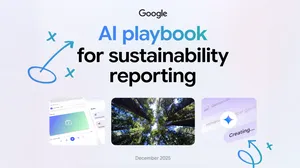How carbon-free energy around the clock can work

In recent years, many companies have been reducing their carbon emissions footprint by purchasing clean electricity. Traditionally, companies purchase renewable energy to match their annual electricity needs, known as “100% renewable energy matching.”
But this 100% annual matching doesn’t mean complete decarbonization, due to the variability of renewable power supply. There are times when not much wind or solar is available and companies have to use fossil-fuel generated electricity. In German, of course, there’s a word for these periods of low wind and sun: Dunkelflauten.
This is a problem, as this graph shows.
Graph showing that surplus energy in some periods does not fill the gap between demand and supply in other periods

During this two-week period, a company matched its total demand (grey) with wind generation (blue). However, even though there’s a surplus of clean energy in the first week, during the second week, demand outstrips available wind power.
Unfortunately, batteries cannot completely fill the gap, as they can only shift surplus power supply by a couple of hours - not days or weeks. More innovation is necessary – and it’s beginning to happen.
Hourly, carbon-free energy targets help reduce emissions
A new approach, called 24/7 carbon-free energy (CFE), first introduced by Google, has emerged to address this challenge. Google and some other companies already match their electricity consumption with renewable energy on an annual basis, but more work is needed to fully eliminate their emissions and operate on clean energy around the clock.
In a new research study, published today by my research group at the Technical University of Berlin, we look at the impact of different clean electricity strategies for select countries in Europe. We find that moving from annual matching to hourly CFE targets would reduce significantly more carbon emissions - across the entire electricity system. A new group of stakeholders has come together under the 24/7 Carbon-free Energy Compact to advance this approach.
According to our simulations for the year 2025, if a business buys energy from the grid in Ireland, its electricity is 61% carbon-free on an hourly basis. If it matches its consumption with 100% renewable energy on an annual basis it is 85% carbon-free on an hourly basis. This reduces emissions relative to the reference case of purchasing no renewables at all. But to reduce emissions further, or eliminate them, the business needs a higher hourly CFE target.
In Ireland, meeting an hourly CFE score above 85% reduces a consumer’s emissions more than matching renewable generation on an annual basis (100% RES).

And they also help decarbonise electricity system as a whole
Hourly CFE targets also benefit the electricity system as a whole. By pursuing hourly matching, companies can reduce overall electricity system emissions faster. If for example in Ireland, 25% of corporate and industry electricity demand achieved 100% 24/7 carbon-free energy in 2025, it would reduce Irish emissions by 0.6 million tons of carbon dioxide per year compared to annual matching, equivalent to 15% of Ireland’s power sector emissions.
The good news: it’s less expensive than you’d think
But how can companies meet these targets, and what does it cost? Our analysis shows that getting to 90-95% CFE doesn’t cost significantly more than annual matching. But the final 5%, because of those long winter Dunkelflauten, triples the cost if it is achieved using only wind, solar, and battery storage.
Fortunately, there are other technologies at hand: long-duration storage, such as chemical storage in the form of hydrogen, can help to store electricity for days or weeks. Carbon capture and storage, advanced geothermal, or advanced nuclear technologies, can contribute. If these technologies are available, the cost of 100% CFE is reduced.
More good news: it spurs technology innovation
Pursuing 24/7 CFE will create early markets for less mature technologies that are needed in the medium-term. Just as solar PV costs plummeted thanks to early markets and improvements in manufacturing, 24/7 CFE could accelerate the development of long-duration energy storage and clean dispatchable power. The whole power system will need these technologies as it decarbonises, so early development will benefit everyone.
To read more, please see our study.






